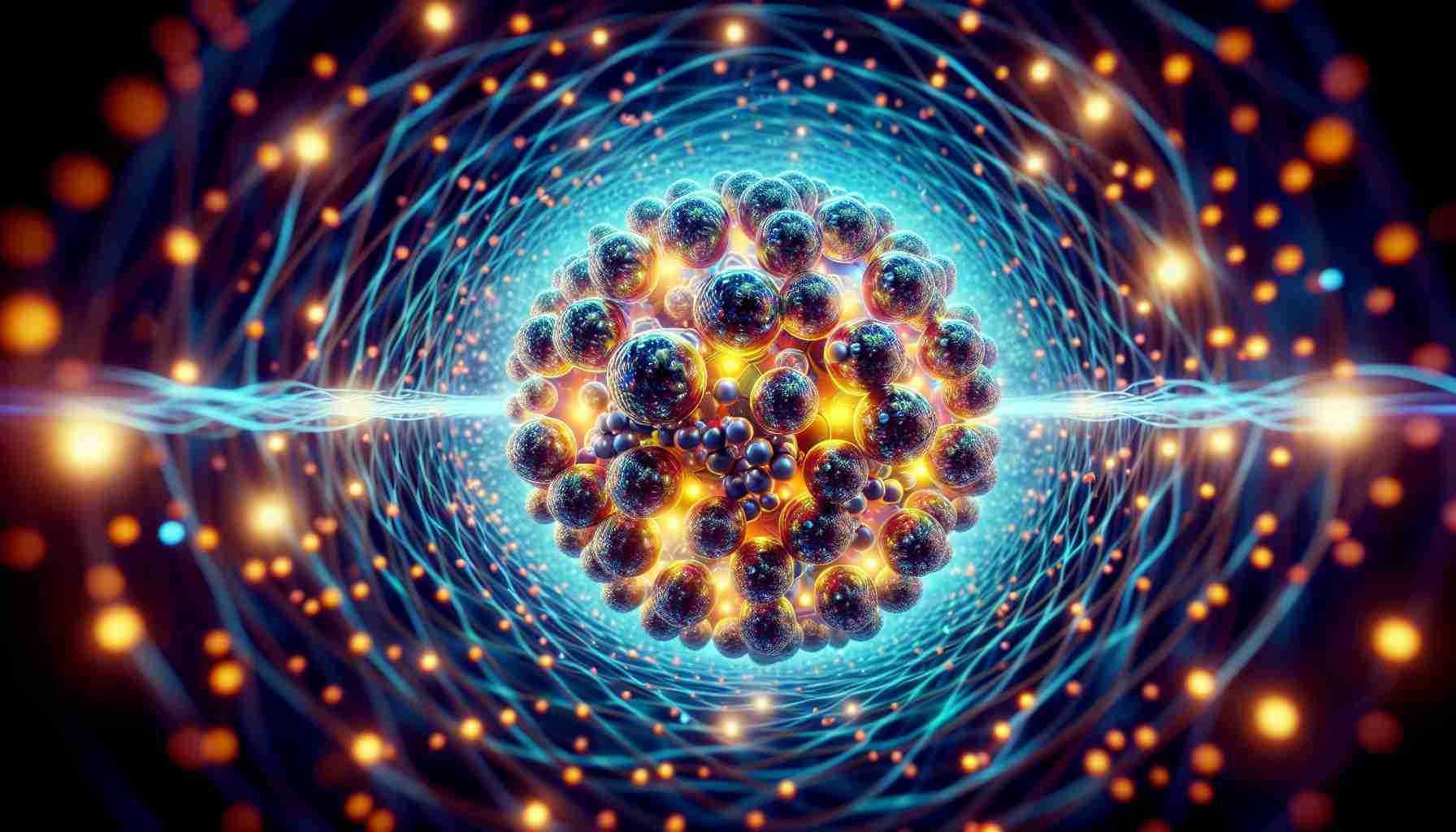Physicists from the Thomas Jefferson National Accelerator Facility of the United States Department of Energy have discovered new details about nuclear forces within a proton by studying the influence of gravity on subatomic particles.
The results of this research, recently published in the journal “Reviews of Modern Physics,” provide insights into the distribution of force that can affect quark particles, which make up the proton.
The lead author of the study, Volker Burkert, Chief Scientific Officer at Jefferson Lab, explains that this observation provides information about the environment in which the components of a proton exist. Protons are made up of three quarks that are bound together by nuclear force.
“To remove a quark from inside a proton, you would need to apply a force exceeding four tonnes,” Burkert explains. “But nature does not allow us to separate an individual quark from the proton due to a property of quarks called ‘color.’ There are three colors that mix inside the proton to make its external structure colorless, which is a condition for its existence in the cosmos.”
“Attempting to separate a quark of a different color than the others would result in the creation of a quark-antiquark meson pair, while simultaneously using energy supplied to separate the quark. As a result, we would obtain a colorless proton (or neutron), with the force required for this process being four tonnes.”
This observation is the second mechanical property of a proton to be measured so far. Its internal pressure, mass distribution (size), angular momentum, and shear stress have been measured previously. This result became possible due to knowledge accumulated over the course of more than half a century as well as data collected over two decades.
As early as the mid-1960s, theorists presented hypotheses regarding the influence of gravity on subatomic particles such as protons. However, at that time, there were no effective research methods to confirm these hypotheses due to the enormous difference in the strength of gravity and electromagnetic forces.
Decades ago, data was collected from experiments conducted using the tools of the Thomas Jefferson National Accelerator Facility. In a typical experiment, a high-energy electron interacts with another particle by exchanging a package of energy and momentum called a virtual photon. The energy of the electron determines which particle it interacts with and how they react to each other.
During the experiment, a force greater than four tonnes required to separate a quark/antiquark pair was applied to a proton immersed in liquid hydrogen.
“In the final stage of the experiment, the proton remained unchanged but rebounded under the influence of the force exerted by the highly energetic electron. As a result of the interaction, a very high-energy photon and a scattered electron were produced,” adds Latifa Elouadhriri, a scientist from Jefferson Lab and co-author of the study. “At the time we were collecting the data, we were not aware that, in addition to imaging in three dimensions, we were simultaneously collecting data that allowed us to understand the mechanical properties of the proton.”
It turned out that this process, known as deeply virtual Compton scattering (DVCS), could be linked to the influence of gravity on matter. The general version of this connection was described in a 1973 textbook on Einstein’s general theory of relativity called “Gravitation,” authored by Charles W. Misner, Kip S. Thorne, and John Archibald Wheeler.
The book stated, “Any massless spin-2 field would produce a force indistinguishable from gravity because such a field would couple to the stress-energy tensor in the same way that gravity interacts.” This theory was further developed thirty years later when Maxim Polyakov delved into this subject.
FAQ section:
1. What did the physicists from the Thomas Jefferson National Accelerator Facility discover?
They discovered new details about nuclear forces within a proton, specifically regarding the force that can affect quark particles, which make up the proton.
2. What are protons?
Protons are particles made up of three quarks that are bound together by nuclear force.
3. How much force is required to remove a quark from inside a proton?
To remove a quark from inside a proton, a force exceeding four tonnes is needed.
4. Why can’t an individual quark be separated from a proton?
An individual quark cannot be separated from a proton due to a property called “color” possessed by quarks. There are three colors that mix inside the proton to make its external structure colorless, which is a condition for its existence in the cosmos.
5. What mechanical properties of a proton have been measured?
So far, its internal pressure, mass distribution, angular momentum, and shear stress have been measured.
6. What research methods allowed for confirmation of hypotheses regarding the influence of gravity on subatomic particles?
Data collected from experiments conducted using the tools of the Thomas Jefferson National Accelerator Facility allowed for confirmation of hypotheses regarding the influence of gravity on subatomic particles.
7. How did the experiment involve the interaction of a high-energy electron with a proton?
In the experiment, a force greater than four tonnes required to separate a quark/antiquark pair was applied to a proton immersed in liquid hydrogen.
8. What is the process associated with the influence of gravity on matter called?
The process is called deeply virtual Compton scattering (DVCS).
9. What theoretical connection was described in the book “Gravitation”?
The book stated that any massless spin-2 field would produce a force that would be indistinguishable from gravity.
10. Who further developed the theory related to the influence of gravity on matter thirty years later?
The theory was further developed thirty years later by Maxim Polyakov.
Suggested Related Links:
– Thomas Jefferson National Accelerator Facility
– Reviews of Modern Physics
The source of the article is from the blog lanoticiadigital.com.ar
